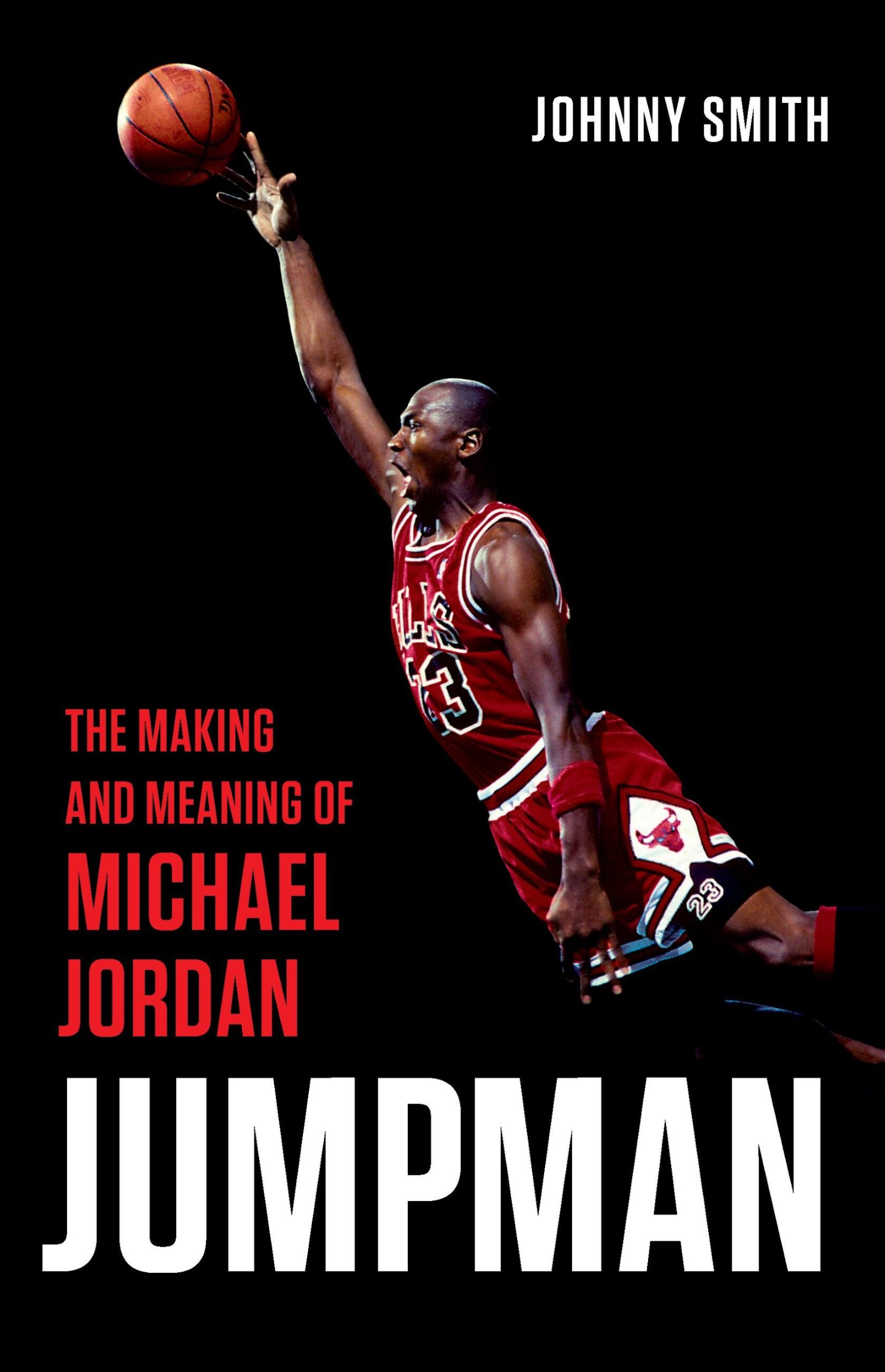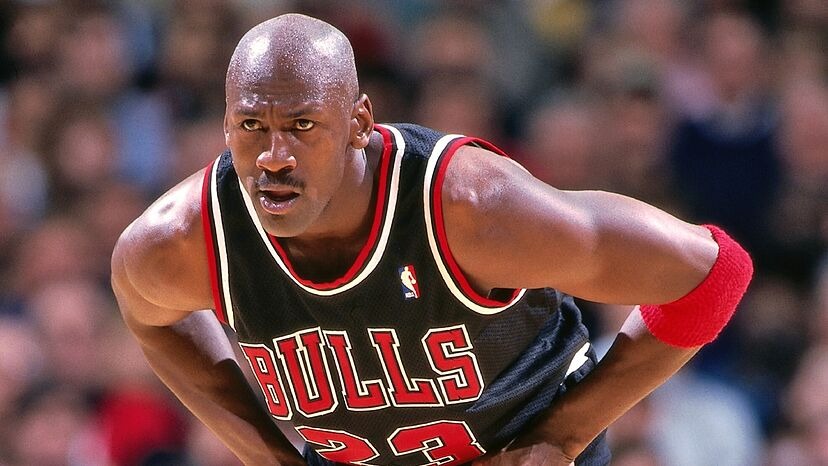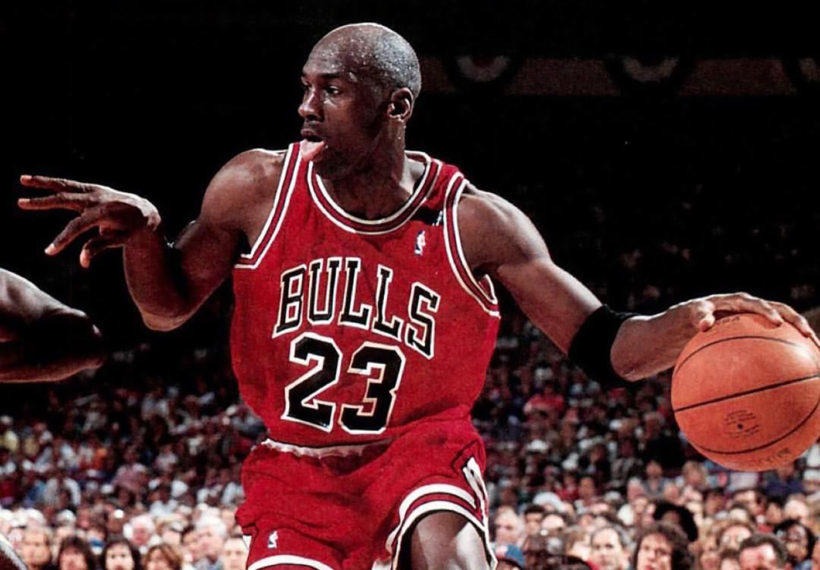You don’t need to know much about basketball to know the name Michael Jordan. His name has become shorthand for the best in any endeavor, sports or otherwise. In the 1980s and ‘90s, Michael Jordan helped transform the game of basketball and wove himself into American culture in a way no NBA player had before. A new book by Atlanta author Johnny Smith chronicles Jordan’s rise to prominence and examines the cultural forces that often complicated that rise. Smith is an associate professor of history at Georgia Tech and the author of Jumpman: The Making and Meaning of Michael Jordan. He spoke with GPB’s Peter Biello, ahead of his appearance Monday, Nov. 27 at 7 p.m. at the Atlanta History Center.
Peter Biello: Michael Jordan helped the Chicago Bulls dominate the NBA in the 1990s. You’re writing here about an incredibly talented player, but also about a man who’s very conscious about how American audiences perceived him. Can you tell us a little bit about the difference between the Michael Jordan that we were all allowed to see and the Michael Jordan that he envisioned himself as privately?

Johnny Smith: Yeah, that’s a great question. Jordan looked back on his career and he said that he had this mystique. And I think what he meant by that is that he was consciously aware of how he cultivated a public image. He played the role of the hero, someone that kids could look up to, someone that parents could admire. This is very intentional for a young Black man who comes to the NBA and gains these incredible endorsement deals. And he talked about this in an interview that stood out to me in 1989 with a reporter from GQ where he basically says to him that he has to be very careful about what he says and does because if he makes some misstep, if he got caught up in some scandal or some controversy, that it would destroy everything he had built as the great American endorser. And he would be reminded from these white parents who thought, “Well, see? He’s another Black basketball player, another Black athlete who’s gotten into trouble again.” And that was the dominant narrative that existed in the NBA before Jordan came to the Bulls in 1984.
Peter Biello: You write here — I’ll quote you — “His universal popularity depended on America’s comfort and with a world where spectacle supplants truth and people consume deceptions like water out of a willingness to believe comfortable lies about themselves and their country.” Can you unpack that a little bit for us? Where was the country at the time?

Johnny Smith: That’s a great question. One of the things that stands out to me about the Jordan story is that most of the writers who covered the NBA at the time, they were white. The way that readers who were reading The Chicago Tribune or Sports Illustrated are seeing Jordan — it’s filtered through the writing of white reporters who extoll Jordan as transcending race. Then this narrative becomes that Jordan is not a great Black American story. It’s a great American story. In other words, his race becomes erased from the story. And that supposedly was the appeal, why he succeeded, that he didn’t remind Americans that he had battles with racism growing up in North Carolina and that he endured racial barriers. Instead, the narrative was that Jordan embodied this racial progress in America.
Peter Biello: One of the issues with Michael Jordan as a role model is that he was uncomfortable with it, but he also very consciously cultivated it. I mean, think of the “Be Like Mike” campaign, which was very much geared towards children and painting him as a role model. Can you talk about the tension there between his discomfort, but also really benefiting financially from cultivating that image?

Johnny Smith: Jordan was really the first professional athlete, the first professional Black athlete where these companies used children and they marketed directly towards children using Jordan. So even before the Be Like Mike campaign was launched by Gatorade in 1991, I found ads on television in the late ’80s with McDonald’s and Coca-Cola and Chevrolet, where kids appear in the commercials with Jordan. And I think this was intentional, to soften the image of this dark-skinned Black man, to make him seem friendly and personable and approachable, like he could be your friend. That was the theme that you get from these commercials where he’s surrounded by kids. When he shows up to a Chicagoland McDonald’s, he sits down with these kids and that makes him fun.
But the Gatorade commercial, I think, is the real turning point. If you rewatch the clips of that Gatorade commercial, I think it’s significant for a few reasons. No. 1 is: As you watched Jordan on the blacktop court, he’s surrounded by kids. And it’s boys and girls. It’s kids of all races and ethnicities. And it comes at a time when America is becoming increasingly diverse, and the NBA and Gatorade are global companies and they’re using Jordan to speak to an increasingly diverse country and also to markets abroad. So Jordan is positioned in the Gatorade commercial, the “Be Like Mike” ad, as the unifying figure. He is this force of racial unity. And of course, part of what made that possible for Jordan and for the corporate sponsors that he partnered with was the fact that he did not speak out about racism.
Peter Biello: So how does that make you think about athletes like Colin Kaepernick now or LeBron James? They spoke out about race and they didn’t need to be prodded to do it. They were anxious to make their voices heard and they took a risk. How did they fit into this context where Michael Jordan didn’t want to talk about it until, oh, I don’t know, what was it, 2016, when he started to really speak out?

Johnny Smith: Right. And at that time, Jordan was then majority owner of the Charlotte Hornets franchise. He’s no longer a player. And so I think if we back up, I try to think in terms of generations. Muhammad Ali and Kareem Abdul-Jabbar, those are athletes who … came of age during the 1960s. And they were also shaped by the Black power movement and the civil rights movement. Protest was clearly linked to their identities in ways that Jordan rejects. Now, I think part of that is that when Jordan comes of age in the late ’70s and into the ’80s, there is no social movement, unified social movement in Black America that speaks to him. What’s interesting, I think, about Jordan, is that he really arrives on the national scene in a much more conservative time in this country. Ronald Reagan is president in 1984 when Jordan comes to the Bulls and increasingly over Jordan’s career we see how Americans are retreating from community affairs. They’re less engaged civically. Voting turnout is down. I think by 1996, when Jordan wins his fourth title with the Bulls, less than half the country participated in the presidential election. And so Jordan is, I think, a reflection of his times as much as Ali and Kareem were a reflection of their times.
Now, fast forward to the last five years or so and the Black Lives Matter movement, which is really the impetus for Colin Kaepernick and LeBron James and Serena Williams, Black players in the NBA, in the WNBA, and also white athletes as allies — I think of Megan Rapinoe, the great soccer player — who came to see that they had a role in this larger struggle against racism and police brutality. And so I think that we have to really think about how the times shaped these individuals, shaped these athletes in very different ways. And so I try to remind readers and my students how much context matters to understand these figures. And that was one of the reasons I wrote this book, as I wanted to write about Jordan, as a historian, in ways that journalists had not really confronted.